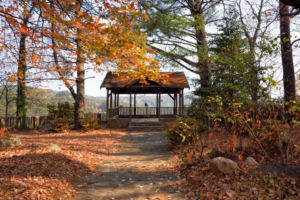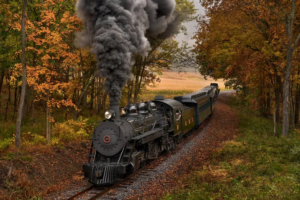
I woke at 4:30 a.m. and stumbled out of my tent into the chilly morning air.
The pre-dawn sky was a soft dove gray, while frost-stiffened grass crunched satisfyingly underfoot. Snow-dusted mountains rose to either side, their sheer rock faces dwarfing our solitary camp. Watching for the first rays of sunlight on the distant peaks, I listened to the icy stream gushing and birds twittering. Cows grazed nearby while bulky yaks navigated the steeper slopes, the terrain of rarely spotted Himalayan ibexes and even lesser-seen snow leopards.
Not for the first time on this trip, I wondered how so many outdoor-loving travelers — myself included — have overlooked Pakistan.
View from a tent to snow covered mountains in Pakistan
Courtsy of Intrepid Travel
Five days prior, I’d touched down in Islamabad, where I met my trekking group. The city — a purpose-built capital established in 1967 — is strikingly green, receiving enough rain to keep it looking lush even during the intense heat of May and June when temperatures can hit 110 degrees F. It felt calmer than I’d expected and was easy to navigate alone.
1 of 3
Courtsy of Intrepid Travel
A man holding a stack of flatbreads in Pakistan
A group of women at the Faisal Mosque in Pakistan
The National Monument of Pakistan
A man holding a stack of flatbreads in Pakistan
A group of women at the Faisal Mosque in Pakistan
The National Monument of Pakistan
Tourism being relatively uncommon, people were openly curious about our presence. One of my fellow travelers proved particularly popular regarding photo requests; it turned out he resembles various mustachioed Australian cricketers (Merv Hughes, Travis Head, a substantially taller David Boon).
Cricket is wildly popular in Pakistan and played everywhere, from the city streets to the mountain valleys. Imran Khan, the captain of the 1992 World Cup-winning team, became Prime Minister and maintained strong grassroots support after being imprisoned on questionable grounds. (“Talking about politics is a national pastime,” said Aneeqa Ali, founder of Pakistani travel company The Mad Hatters, who I met in Islamabad. But religion, she added, is more taboo.)
Hikers in the distance in a valley in Pakistan
Courtsy of Intrepid Travel
Islamabad lies at the foot of the Margalla Hills National Park, a refuge for city dwellers escaping the heat (and a population of leopards). One morning — painfully early — I joined a local trail running group, gasped, and wheezed my way up switchback paths carpeted in pine needles to a summit overlooking the city. I could hear the distant rush of traffic far below, layered under birdsong. We jogged along the ridge line and back down to the carpark — a warmup for the trip’s main event.
A group of people hiking over a stream in the Nanhma Valley of Pakistan
Courtesy of Intrepid Travel
Pakistan has abundant hiking and mountaineering opportunities, especially in its Himalaya-adjacent Karakoram range, which includes some of the world’s highest peaks and valleys of staggering beauty. Yet, the tourism figures don’t reflect this.
In 2019, around 28,000 foreigners visited Pakistan on tourism visas, compared to 1.2 million tourist arrivals in Nepal and nearly 11 million in India. Safety perceptions that date back to the 9/11 aftermath, a lack of government interest in promoting tourism, relatively few tour operators offering trips, and a dearth of information for intrigued travelers are just a few contributing factors.








